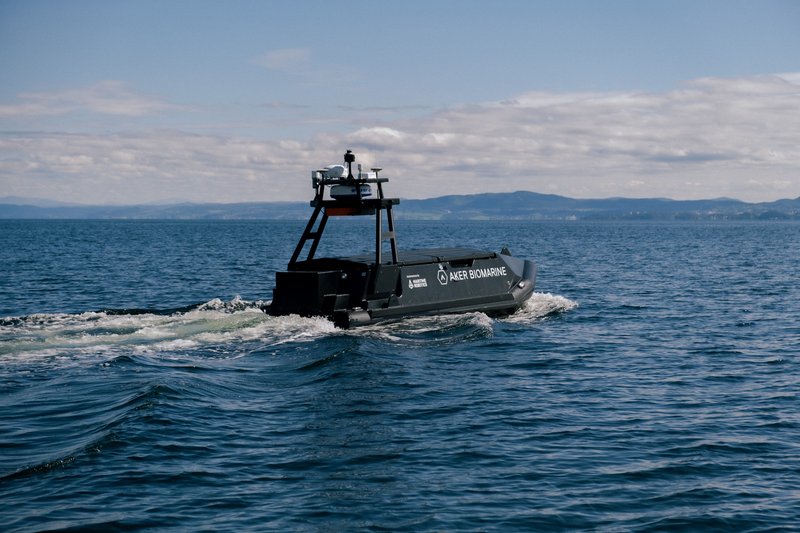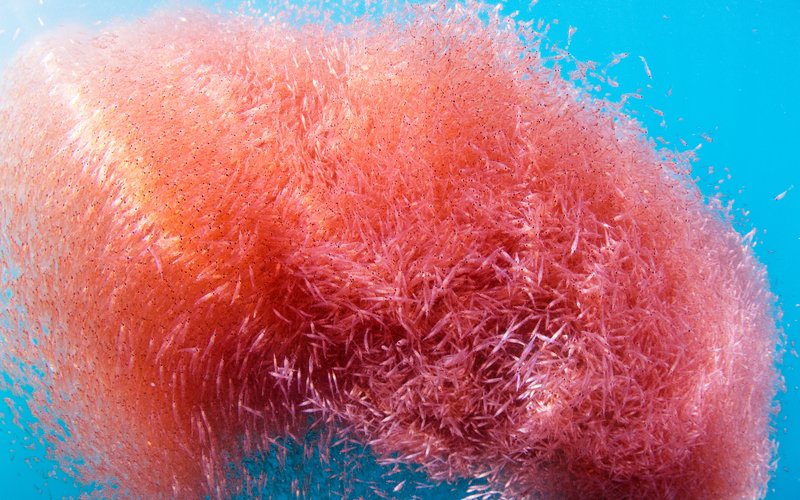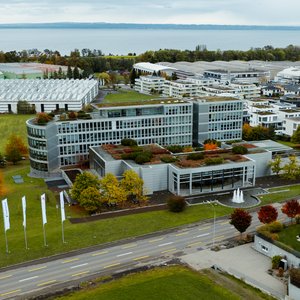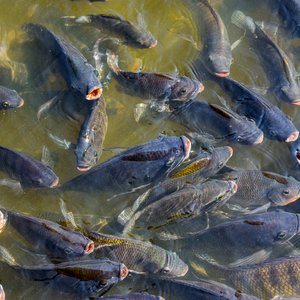The seven-meter-long, autonomous drone vehicle (boat) was showcased on stage during the presentation of Matss Johansen, CEO of Aker BioMarine. Speaking at AquaVision 2024, held recently in Stavanger, Norway, Johansen addressed that this innovation is drastically increasing the volume of krill Aker BioMarine can bring to land. “With the current techniques, we can only catch a portion of the allowed catch limit for krill. So we turned to AI and robotics to help us out here. And we are the first fishing company to take this route, disrupting the way of fishing,” Johansen explained to Aquafeed.com.
Increased demand for krill
Aker BioMarine is the biggest krill fishing company, currently harvesting 70% of the total yearly catch of 387 MT. But there is room for growth. Johansen: “The krill quota is set at 1% of the total biomass of krill found on earth, to ensure that enough is left for wild species. Despite this conservative quota, which has been set at the same level for many years and will not change in the future, we still don’t tap into the full potential. We can still harvest another 1.1 MT and remain within the quota. This is a huge volume of unharvested krill, representing large economic and nutritional (omega-3s) value for the market.”

“And we need these extra volumes because the market is asking for it. The aquaculture industry is growing at a rate of 4-5% per year. At the same time, the demand for marine ingredients is growing again after some decades when we looked at lowering its inclusion, due to price, availability and environmental issues, among others. But with the performance and disease challenges we face today, the interest in omega-3-rich ingredients is on the rise. The higher volumes needed will not come from other wild fishes (such as tuna, anchoveta or sardine) which are already fished at maximum capacity. The omega-3s will come from krill. And if we can catch more of it, the price will also go down,” Johansen explained.
Building a digital captain
So why not catch more? The vessels are there, the krill is there. But this is easier said than done. While there is basically krill everywhere to be found in the oceans, it remains a challenge to find the best spot for the vessels to fish. “The Antarctic is a huge area we cover, with the current seven vessels we have. What we see in practice is that vessels prefer to stay in a spot where the catch is good than look for places that might have a higher population of krill. Relocating to another area takes time and is a risk. We simply didn’t have the data we have today to make these decisions in real time. We were missing the predictive intelligence here”, said Johansen.

Mariner USV is a smart combination of robotics and AI. It serves as a digital captain for the fishing vessels. There is one in operation already since the beginning of this year. Credits: Aker BioMarine
This is why, eight years ago, Aker BioMarine turned to the Norwegian company Maritime Robotics, leading to Mariner USV (unmanned surface vehicle) in 2023. “This vehicle is a smart combination of robotics and artificial intelligence (AI). The AI model was trained by using the drone data, our company’s database of historic harvest data and adding external data sources such as information on algae blooming, satellite data, moon phases and weather patterns. The USV roams the waters, and maps populations of krill, gathers data, and hence predicts where krill can be found at any given time. We plot this data on a map and make it visible (with colors) for vessels to see where big krill populations hold up. Having this digital captain allows them to decide to relocate from their current fishing spot, or not”, Johansen explains.

The vessels can see where big krill populations hold up, based on the data from Mariner USV. Credits: Aker BioMarine
Efficiency gains on all levels
Since the beginning of 2024, one Mariner USV has been in operation at the fishing field in Antarctica. Being the first, the USV still has a manual override to keep an eye on possible accidents or technical issues, but the intention is to send it off completely on its own in 2025. Aker BioMarine also wants to grow the USV fleet, having both vehicles that cover shorter (60-70 km radius) and longer distances on the sea (going from one corner of the Antarctic to the other). “Even though we just started, the results of the first quarter of this year already showed 12% more harvest, compared to fishing with the same number of vessels without using the USV. In several cases, our vessels decided to relocate, based on the predictive intelligence from Mariner USV,” said Johansen.
Johansen is proud of this innovation from a technology perspective, but he also addressed that his company is investing a lot in R&D to confirm that krill is improving the health and performance of fish and shrimp. “We have done many studies to date, and some of the recent trials we did in salmon showed that including krill in the diet (compared to a standard salmon feed without krill) reduces lice infestation by 23%, significantly reduces gill disease and significantly speeds up the recovery of skin wounds. We also saw a 22% reduced mortality and improved robustness and health in all studies. We continue to conduct more studies and work on the technology and AI side of the harvesting. This way we actively work on (nutritional) solutions to tackle today’s rising challenges in aquaculture,” Johansen concluded.










